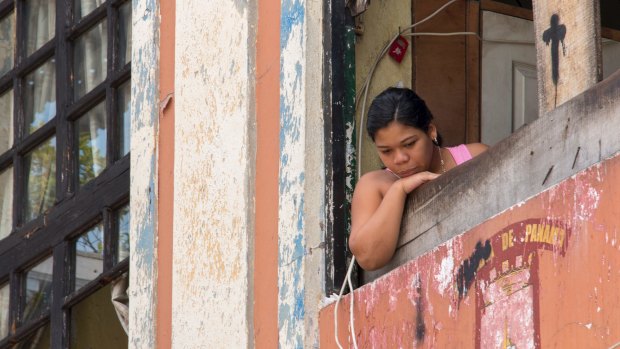
A resident of Casco Viejo.Credit: iStock
"I'm very proud of Jafet," says Santiago, referring to the trim young man in a polo shirt and Panama hat standing next to him. "He was the scum of the earth. A cold-blooded killer. Now, he's a minister and a human rights lawyer. He's totally changed his life."
Jafet used to be a member of Ciudad de Dios, one of several violent gangs that operated on the fringes of Casco Viejo, the colonial-style old quarter of Panama City. We're standing outside what was once the gang's headquarters, a five-storey building on the north side of Plaza Herrera. Between 1995 and 2005, dozens of gangs were based here, dealing in drugs and prostitution in what soon degenerated into a vicious, cockroach-infested hellhole.
Santiago claims 18 members of Ciudad de Dios were killed here in drug-related skirmishes and many more had narrow escapes. Mario LaMafia, a notorious drug-trafficker, was shot three times before jumping out of a window to escape. He survived "because he was scrawny" and now works in a local fishmongers', albeit with a limp.
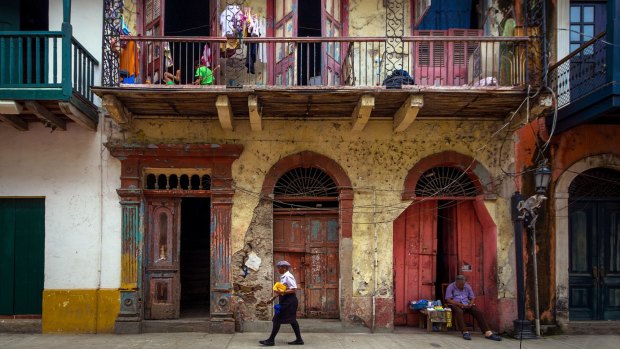
Casco Viejo, Panama City, is still home to a potent mix of colonial charm and dilapidation.Credit: iStock
In a remarkable change of fortune, the building is now the American Trade Hotel, one of Panama's most expensive luxury hotels. Proof of its previous incarnation can still be found in a stairwell plastered with gangland posters and graffiti.
The area's gentrification is thanks to the efforts of some local businessmen who decided to tackle the gang problem head on. They offered gang members courses, counselling and work placement in an attempt to integrate them back into society. Miraculously, it worked.
One of the most successful projects has been "The Fortaleza Tour", a walking tour of the gang's old stomping ground led by a former gang member.
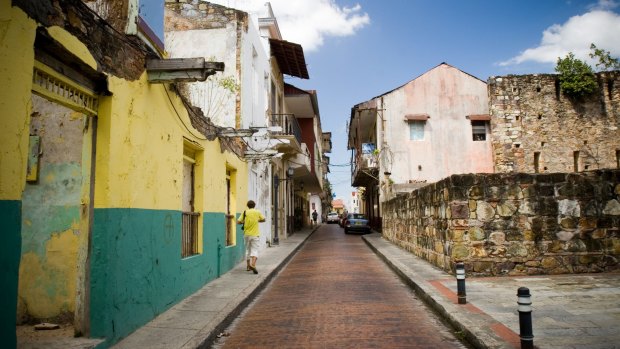
Casco Viejo streetscape.Credit: iStock
Jafet's English is limited, so Santiago leads today's tour. The 65-year-old Vietnam veteran has been working with the project for two years and he's an entertaining guide. His rapid-fire delivery and lack of teeth (he has only one left) mean I don't catch everything he says but his enthusiasm is infectious.
We leave the elegant surrounds of the American Trade Hotel and turn right, passing remnants of the quarter's original 17th-century defensive stone wall. In the space of a block everything changes. For every brightly-coloured colonial townhouse, there's now a dilapidated tenement next door. Many buildings are boarded up and some are covered in barbed wire. This is where Jafet and his fellow gang members grew up, a violent neighbourhood that until recently was a no-go zone for tourists.
Santiago senses my apprehension. "Don't worry," he says, flashing his one-tooth smile. "The only person who will rob you here is me."
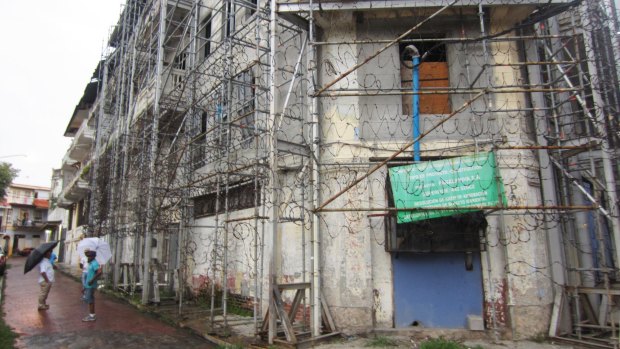
A derelict building in Casco Viejo.Credit: Rob McFarland
Many families still live in the area, choosing to squat in condemned buildings until the inevitable gentrification moves them on. Men watch sport on large flat-screen TVs while children play outside in the street. Santiago points at an overloaded junction box with cables haphazardly running to several houses. "No one pays for electricity here."
We walk along Calle Carlos A. Mendoza, a "neutral street" where rival gang members used to walk up and down eyeing each other up. Today, there's no sign of any tension. "I've been doing this tour for two years," says Santiago, "and I ain't ever heard a gunshot."
Despite its challenges, this district has produced two of Panama's finest sportsmen. We pass the rundown former home of Laffit Pincay jnr, the second most successful jockey of all time with an astonishing 9530 wins. Boxer Roberto Duran also grew up near here. Widely acknowledged as one of the greatest fighters of all time, he slugged his way out of a slum called La Casa de Piedra (The House of Stone).
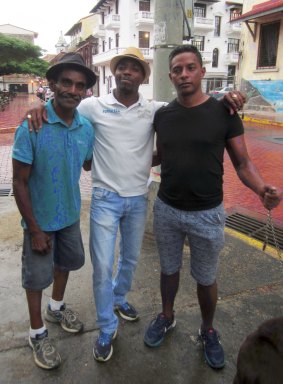
Jafet with Santiago and one of his former gang members.Credit: Rob McFarland
We pass an alleyway that used to be one of Ciudad de Dios' main hangouts. It's now an alfresco restaurant and on the wall is Fortaleza's logo, a shield with four symbols, one of which represents the heavy burden its members still carry. "These guys are walking on the edge," says Santiago. "Every day they're fighting demons."
On the way back to the hotel we meet Alex, one of Jafet's former gang mates. I ask him if he misses being in a gang. "No," he replies vehemently. "Now my gang is my wife and two children."
TRIP NOTES
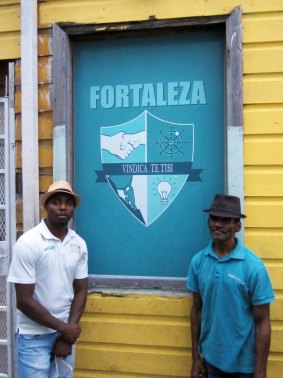
Jafet and Santiago in front of Fortaleza's logo.Credit: Rob McFarland
MORE INFORMATION
GETTING THERE
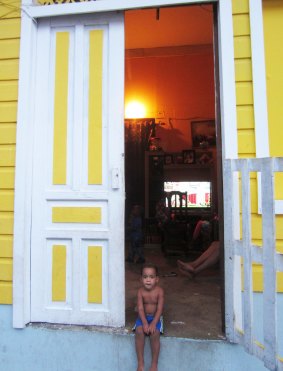
A child sits in the doorway of a house in Casco Viejo.Credit: Rob McFarland
Air New Zealand flies via Auckland to Houston. United flies direct from Houston to Panama City. See airnewzealand.com.au; united.com
STAYING THERE
The five-storey, 50-room American Trade Hotel oozes colonial charm with an impressive rooftop pool and an intimate jazz club. See acehotel.com/panama
TOURING THERE
Latin America specialist Chimu Adventures can create a tailor-made Panama itinerary including flights, accommodation, transfers and tours. Phone 1300 773 231; see chimuadventures.com
Rob McFarland was a guest of Air New Zealand and Chimu Adventures.
Sign up for the Traveller Deals newsletter
Get exclusive travel deals delivered straight to your inbox. Sign up now.